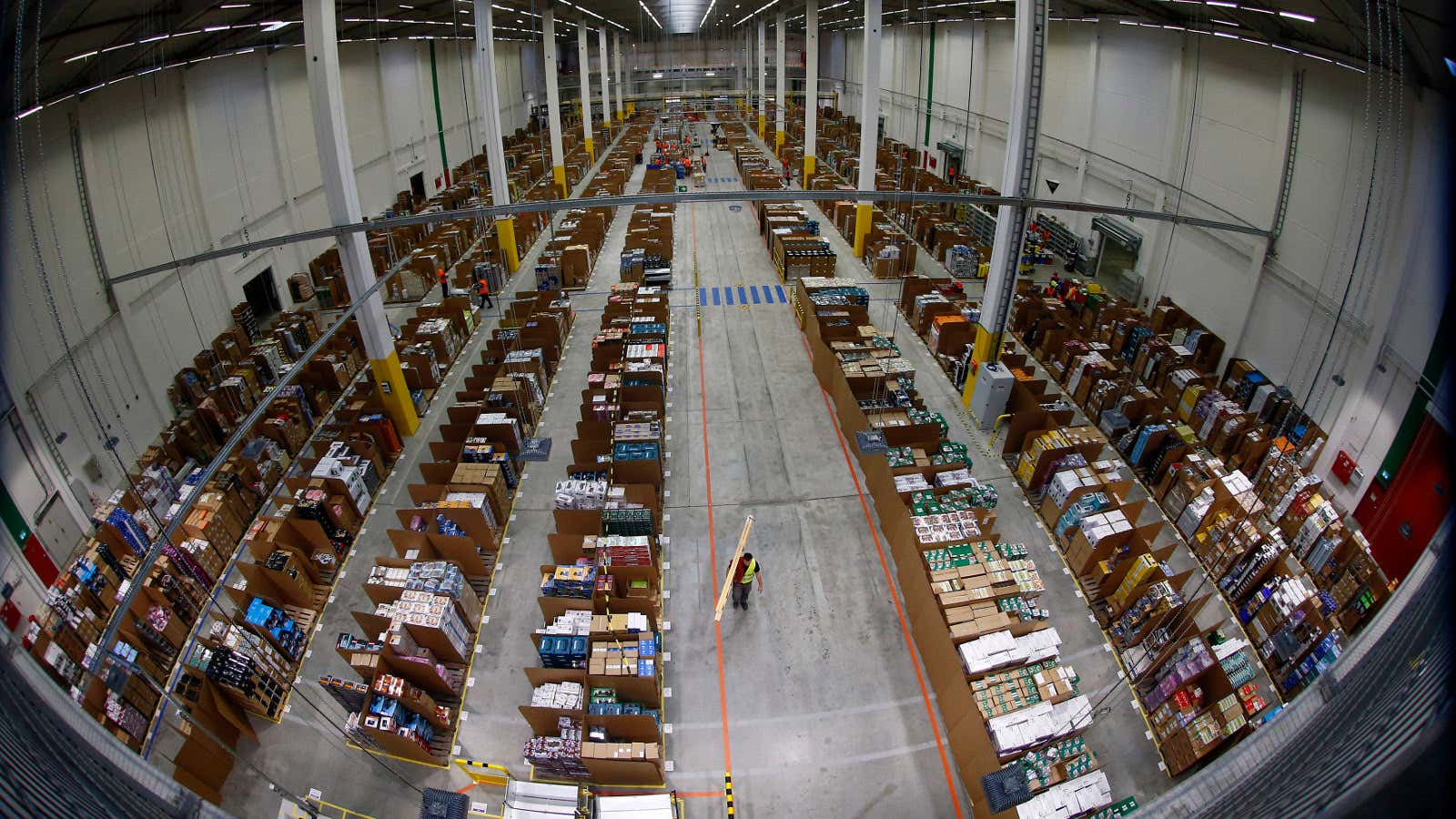In another test of its ambitions to be a global e-commerce powerhouse, Amazon is putting its stamp on Mexico. Its new e-commerce site, Amazon.com.mx, which launched June 30, will allow customers in the country to buy millions of physical items for delivery. Previously, the company only offered Kindle devices and e-books in Mexico.
The move isn’t Amazon’s first into Latin America; it already operates in Brazil. And in keeping with its unconventional business model, it has been blazing into new regions across the globe to beat the competition, despite the fact that its international growth appears to be slowing.
Expanding into countries like Brazil and Russia will take time to pay off, partly because of hiccups in how consumers pay, which typically involve cash payments or installments. Although the retailer now operates in the UK, Ireland, Germany, Spain, France, Canada, Italy, China, India, the Netherlands, Australia, Brazil, Russia, and Japan, 60% of its sales still come from North America, and most of those from the US.
In Mexico, Amazon faces the risk that customers with high expectations of US-style delivery will be disappointed. For now, the company is offering free delivery in three to five days on purchases of 599 pesos or more (around $38) and next-day delivery for Mexico City, Monterrey, and Guadalajara. In India, where Amazon faced an uphill battle with logistics, it resorted creating its own delivery company and partnered with the Indian postal service.
Mexico is far more urbanized, which should help. Amazon has already built a 700,000-square-foot distribution headquarters in Cuautitlán Izcalli, 43 miles from the capital.
Another challenge will be its more than 140 e-commerce competitors in the country, including online fashion retailer Privalia; online marketplace MercadoLibre; Inditex, holder of Zara and Bershka; and Walmart.
Still, Amazon benefits from the nascency of Mexico’s e-commerce market which is ”less developed than in other countries,” say David Bernardo, founder of the Mexico-city based e-commerce consultancy LITS ebusiness. ”This is exactly the time when it’s exploding.”
According to Bernardo, the biggest challenges for Amazon will be finding local talent, choosing the right suppliers, and catering to the peculiarities of the Mexican market, says Bernardo. With the help of native country director Juan Carlos Garcia, Amazon “will have to figure out how to tropicalize international practices,” he tells Quartz.
In the welcome letter by Jeff Bezos to new Mexican customers, CEO Jeff Bezos highlighted one example of the new site’s local flare: a device for transporting an opened avocado. It’s a start.
